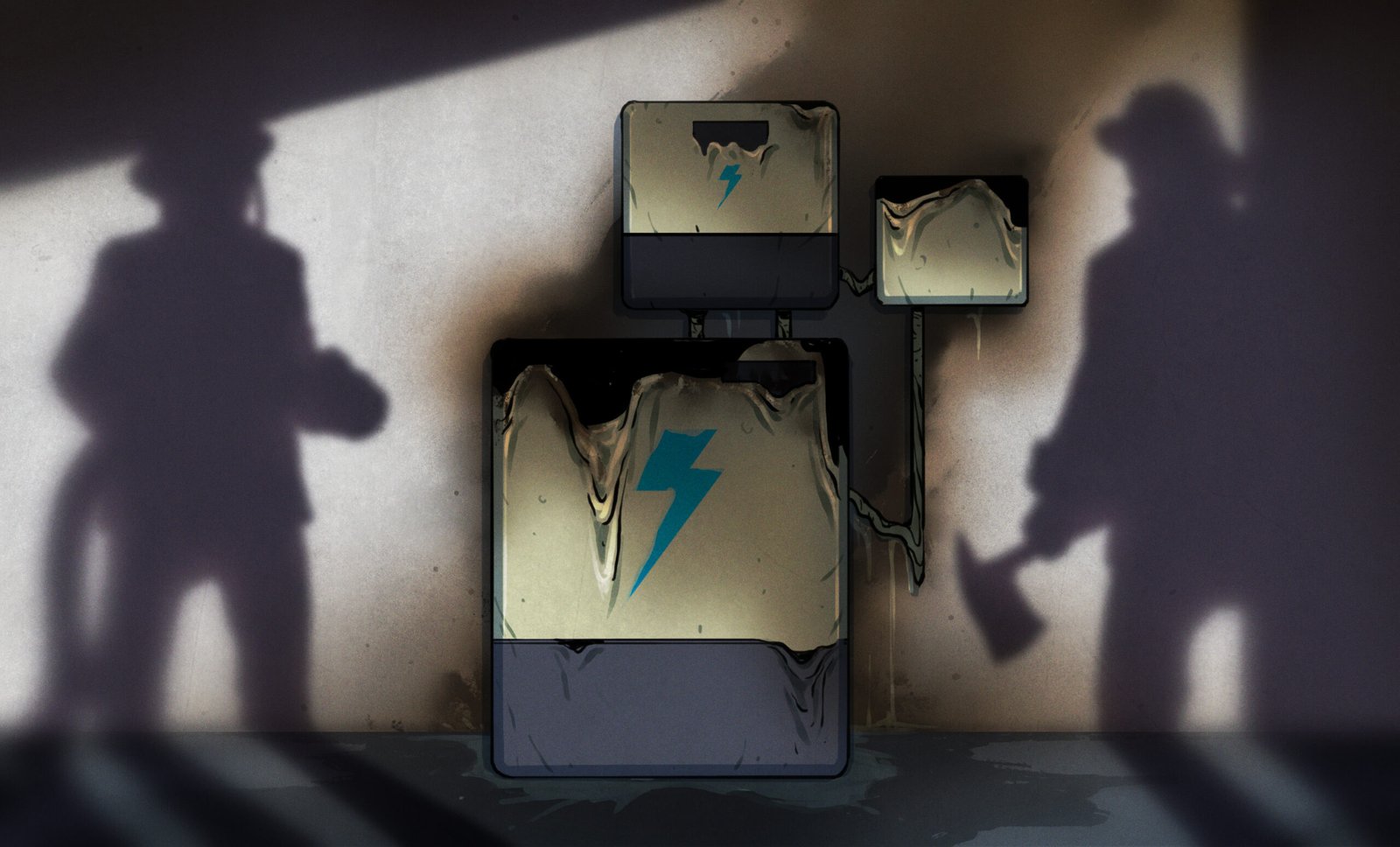
The advent of rooftop solar power generation was a huge step forward for renewable energy. No longer was generating electricity the sole preserve of governments and major commercial providers; now just about any homeowner could start putting juice into the grid for a few thousand dollars. Since then, we’ve seen the rise of the home battery, which both promises to make individual homes more self sufficient, whilst also allowing them to make more money selling energy to the grid where needed.
Home batteries are becoming increasingly popular, but as with any new home utility, there come risks. After all, a large capacity battery can present great danger if not installed or used correctly. In the face of these dangers, authorities in jurisdictions around the world have been working to ensure home batteries are installed with due regard for the safety of the occupants of the average home.
Hot Stuff

Home batteries exist for one reason—to store electrical energy for later use. Currently, this is most effectively achieved with the use of lots of lithium-ion cells. While the dangers of lithium-ion cells are often overstated and dramatized, they do nonetheless pose a safety risk when things go wrong. There is of course, the electrical danger, however adherence to proper wiring standards and such typically manages that problem. The greater concern when it comes to home battery installations is around fire. If a large bank of lithium cells catches alight, either through its own malfunction or an external cause, the resultant blaze can be fierce, and incredibly difficult to extinguish. It is for this reason that authorities have developed extensive regulations around home battery installations. The aim is generally to avoid the likelihood of ignition or fire wherever possible, and limit the possible harms if such a thing should occur.
Basically, you don’t want a massive lithium battery fire to overwhelm you with smoke and flames, trap you in your home, or otherwise cause great injury. Thus, most jurisdictions post strict regulations about where a battery may be installed in a typical home. For example, in the US, NFPA rules mandate that residential batteries can only be installed in garages, on exterior walls or outdoors at least three feet away from windows, or in utility closets and storage spaces. Regulations in other jurisdictions are similarly strict; Australian rules ban installations under stairs or ventilation ducts, for example, along with any installations in ceilings or wall cavities. It might feel convenient to tuck batteries away where they can’t be seen, but the risks are considered too great. It’s just generally considered a bad idea to pack your walls or roof full of highly-combustible material.

Often, many jurisdictions also require some level of non-combustible barrier to protect nearby structures that are made of combustible material. For example, if installing a battery near a wooden part of a building, regulations may insist upon the use of materials like brick or concrete that won’t readily catch alight if the battery enters thermal runaway. Capacity limits are also typical, as it’s undesirable to have an excessively large battery in a residential installation where it could one day become an unstoppable inferno in an inhabited area.
It might then seem, based on all the safety concerns around putting big batteries near inhabited structures, that a more remote installation would be best. However, standalone outdoor installations are often also subject to their own restrictions. For example, in Australia’s hot climate, outdoor installs must be protected to some degree from direct sunlight to avoid overheating issues that could lead to disaster. Garage or garage-adjacent installations generally require protection against potential vehicles impacts, too. For example, the NFPA 855 standard requires the use of hefty 4-inch bollards set 3-feet deep in concrete to protect against accidental vehicle impact in commercial installations, while noting that any risk of impact is unacceptable for residential garage installations.
These are just some of the hurdles you will have to clear if you wish to install a large storage battery in your home. There are so many others, from regulations around approved batteries and inverters, wiring rules, as well as the necessary signage to indicate to tradespeople and first responders that a large battery is connected to the home’s electrical supply. It can be a lot to take in, though for the average customer, it’s up to their home battery installer to ensure compliance in these regards. If you’re looking at such an installation, though, and you’re wondering why you can’t put your battery exactly where you like, just know that there are likely many good reasons behind it!
This articles is written by : Nermeen Nabil Khear Abdelmalak
All rights reserved to : USAGOLDMIES . www.usagoldmines.com
You can Enjoy surfing our website categories and read more content in many fields you may like .
Why USAGoldMines ?
USAGoldMines is a comprehensive website offering the latest in financial, crypto, and technical news. With specialized sections for each category, it provides readers with up-to-date market insights, investment trends, and technological advancements, making it a valuable resource for investors and enthusiasts in the fast-paced financial world.
